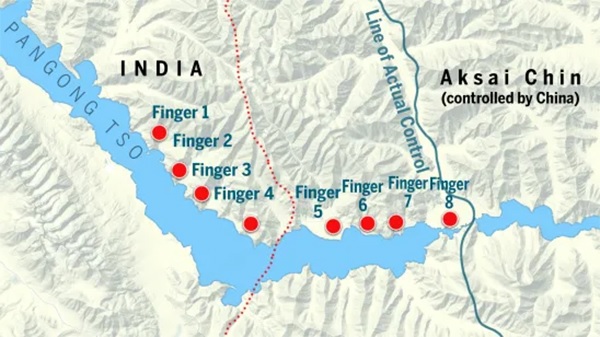India
The Indian Navy is facing a challenging situation with its frigate INS Brahmaputra, which has suffered a severe tilt following a fire during its refit at the Naval Dockyard in Mumbai. The warship, now leaning at an angle of 40-45 degrees on its port side, presents a complex problem that the Navy is working to resolve. The fire incident has caused significant damage, and while the situation is not as critical as the earlier incident with INS Betwa, the recovery process for INS Brahmaputra is expected to be time-consuming and intricate. The task of righting the ship could take up to three months, depending on the approvals and resources needed.Currently, assessments are being conducted to determine the best way to stabilize the ship. Once the Brahmaputra is uprighted, a thorough evaluation will follow to understand the full extent of the damage and the repairs required to return the ship to operational readiness.Given the complexity of the salvage operation, the Indian Navy is considering bringing in global salvage experts. This approach, which has been used in similar situations in the past, aims to harness international expertise and resources to ensure a successful recovery. The involvement of these global firms is expected to enhance the efficiency and effectiveness of the salvage process.As the Indian Navy embarks on this significant operation, there is hope that the efforts will successfully restore INS Brahmaputra to its former condition, and the public will be watching closely for updates on the recovery progress.
Read More → Posted on 2024-08-03 15:59:31World
In a shocking turn of events, Iran's Revolutionary Guards announced that Ismail Haniyeh, the leader of the Palestinian militant group Hamas, was killed in Tehran by a short-range projectile. The projectile, equipped with a warhead weighing around 7 kilograms, struck its target on Wednesday, raising fears of escalating conflict in the region.Haniyeh's assassination has intensified tensions between Iran and Israel, already strained by ongoing hostilities in Gaza and Lebanon. Iran has accused Israel of orchestrating the attack, particularly significant given Haniyeh's recent presence at the inauguration of Iran's new president. This claim comes as Israeli officials have remained silent and have not acknowledged any involvement in the incident.The Revolutionary Guards have vowed severe revenge against those they hold responsible. Their statement not only condemns the "terrorist Zionist regime" of Israel but also implicates the "criminal U.S. government" in supporting the attack. Iranian media reported that the strike occurred in a northern suburb of Tehran, a city now mourning the loss of a key militant leader.Following the attack, Haniyeh was buried in Qatar, where he had been based. The incident has further complicated an already volatile situation, with many fearing that the death of such a prominent figure could ignite a broader conflict.As Iran and Hamas seek justice for Haniyeh’s death, the international community watches closely, wary of the potential for increased violence in an already troubled region.
Read More → Posted on 2024-08-03 15:52:00India
In a significant leap forward for India's armored capabilities, the Defence Research and Development Organisation (DRDO) has introduced a revolutionary microclimate system to the Arjun main battle tank. This state-of-the-art technology is set to greatly enhance both the operational effectiveness and the comfort of the Arjun tank's crew, particularly in the harsh and varied climates of India's operational environments.The new microclimate system is meticulously designed to maintain an optimal temperature and humidity level within the crew compartment. This innovation is crucial for the Indian armed forces, who often find themselves operating in extreme conditions, from the scorching heat of deserts to the bitter cold of mountainous terrains. By ensuring a stable internal environment, the system enables tank crews to perform at their best, regardless of the external weather conditions.India's diverse geography presents a unique set of challenges for its military. The Arjun tank, which is already a formidable asset in the country's armored fleet, now boasts an added layer of resilience and efficiency thanks to DRDO's latest enhancement. The introduction of the microclimate system is expected to significantly reduce the physical strain on crew members, allowing them to focus more effectively on their missions.This development is not just about improving comfort; it also plays a crucial role in maintaining the operational readiness of the tank. Extreme temperatures can affect both the crew and the sensitive electronics within the tank. By regulating the internal climate, the new system helps to protect vital equipment from overheating or freezing, thereby extending its operational lifespan and reliability.DRDO's initiative is also a testament to India's commitment to indigenization and technological self-reliance in the defense sector. By developing and integrating this advanced microclimate system locally, India reduces its dependency on foreign technologies, strengthening its defense capabilities and boosting national pride.The successful deployment of this system is anticipated to have a far-reaching impact on the overall combat readiness and endurance of units equipped with the Arjun tank. Improved crew conditions mean longer operational periods and a higher level of efficiency in various combat scenarios, making the Arjun an even more formidable presence on the battlefield.The Arjun main battle tank, already known for its robust firepower and advanced armor, now gains an edge with enhanced crew comfort and operational efficiency. This move by DRDO marks a significant step in modernizing India's defense technology and showcases the nation's ability to innovate and adapt to the evolving needs of its armed forces.By integrating cutting-edge technology with indigenous expertise, India continues to pave the way for a more self-reliant and capable defense sector. The microclimate system in the Arjun tank is a shining example of how innovation can directly translate into improved performance and effectiveness on the ground, ensuring that India's armored units remain a force to be reckoned with in any theater of operation.
Read More → Posted on 2024-08-03 15:49:40World
The United States is taking decisive action to reinforce its military presence in the Middle East, deploying additional fighter jets and Navy warships in response to escalating tensions between Iran and Israel. This move follows threats from Iran and its allies, Hamas and Hezbollah, amid ongoing conflict in the region.The Pentagon announced on Friday that Defense Secretary Lloyd Austin has approved the deployment of Navy cruisers and destroyers capable of intercepting ballistic missiles to both the Middle East and Europe. Additionally, an extra squadron of fighter jets will be sent to bolster defenses in the region. These measures are part of a broader strategy to enhance U.S. force protection, support Israel's defense, and prepare for various contingencies.This escalation comes in the wake of the assassination of Ismail Haniyeh, a senior Hamas leader, in Tehran. Iran has vowed retaliation for Haniyeh’s death, which it attributes to Israel. Although Israel has not claimed responsibility for the killing, the incident is the latest in a series of targeted attacks on senior Hamas figures as the conflict in Gaza approaches its eleventh month.The U.S. military's increased presence aims to deter further aggression from Iran and its proxies. The deployment includes replacing the USS Theodore Roosevelt carrier strike group with the USS Abraham Lincoln carrier strike group, ensuring continued American naval power in the region. This move also coincides with heightened vigilance following an Iranian drone and missile attack on Israeli territory on April 13, which was largely thwarted by Israeli defenses with U.S. support.The potential threat from Hezbollah in Lebanon adds another layer of complexity. Hezbollah's vast arsenal and proximity to Israel pose significant challenges to intercepting drones and missiles. This situation underscores the importance of the U.S.'s bolstered defenses to protect both American and Israeli interests.President Joe Biden has been in close communication with Israeli Prime Minister Benjamin Netanyahu, discussing the new U.S. military deployments to support Israel. The White House emphasized that these measures aim to protect against missile and drone threats.Despite the military buildup, Pentagon spokesperson Sabrina Singh expressed hope that escalation is not inevitable. She stressed the importance of diplomatic efforts and the possibility of a ceasefire. Indeed, an Israeli delegation is set to travel to Cairo for negotiations aimed at reaching a ceasefire and securing the release of hostages, as confirmed by Netanyahu's office.The situation remains tense as the international community watches closely. The U.S. is making clear its commitment to defending its allies and maintaining stability in the Middle East, even as it navigates the complexities of the region's shifting dynamics.
Read More → Posted on 2024-08-03 15:45:39India
The Indian Army has taken a significant step forward in modernizing its armored capabilities with the delivery of the first batch of upgraded T-90 Bhishma MK-3 main battle tanks (MBTs). This initial delivery, comprising ten T-90MS tanks, marks the beginning of a phased series of deliveries that will add a total of 464 units to the Army's arsenal over the next five years.This development stems from a contract signed in 2019, which aims to deliver 464 T-90 Bhishma MK-3 tanks. The first ten units have now been handed over, and the remaining tanks will be delivered in phases, ensuring that the Indian Army steadily enhances its combat capabilities. In addition, the existing T-90S tanks in the Indian Army's fleet will be upgraded to the T-90MS standard, ensuring a modernized and uniform fleet.The T-90 Bhishma MK-3 is renowned for its impressive firepower and advanced armor protection. The Mk-3 version integrates state-of-the-art upgrades, including advanced targeting systems, improved survivability features, and enhanced mobility. These upgrades make the T-90 Bhishma MK-3 a formidable asset on the battlefield.A significant feature of the T-90 Bhishma MK-3 is its high degree of indigenization. The tank boasts an indigenous content of 83%, with 100% indigenous production for its engine. This high level of indigenization reflects India's commitment to reducing dependency on foreign defense imports and strengthening self-reliance in military technology.Powering the T-90 Bhishma MK-3 is a V12 diesel engine that develops 1,130 horsepower, allowing it to reach a maximum speed of 60 km/h and a range of 550 km. Weighing 50.7 tons, the tank is designed to be both robust and fast on the battlefield.The armament of the T-90 Bhishma MK-3 includes a 125 mm 2A46M-5 main gun with an automatic loader, a coaxial 7.62 mm machine gun, and an optional remotely controlled 7.62 mm anti-aircraft machine gun. It can carry 42 rounds of 125 mm ammunition and 3,000 rounds of 7.62 mm ammunition, with 12 smoke grenade launchers on the turret for concealment maneuvers.The tank is equipped with a thermal sighting system developed by DRDO and Bharat Electronics Limited, capable of detecting targets up to 8 km away, day or night. It also features a laser rangefinder with a range of up to 5 km. The fire control system integrates a digital ballistic computer, improving accuracy by accounting for various environmental conditions. An automatic target tracking system allows for quicker and more precise target acquisition and tracking.For protection and survivability, the T-90 Bhishma MK-3 uses Kontakt-5 explosive reactive armor (ERA), which provides enhanced protection against projectiles and anti-tank missiles. It is also equipped with Saab's LEDS-150 active protection system (APS), increasing survivability against modern threats. Additionally, it has protections against chemical, biological, radiological, and nuclear (CBRN) threats.The integration of the T-90 Bhishma MK-3 significantly enhances the Indian Army's capabilities, offering better mobility, superior firepower, and increased protection. These improvements will enable the Army to better respond to modern threats and maintain a strong defensive posture in the region.The Heavy Vehicles Factory (HVF) in Avadi is responsible for the assembly and modernization of these tanks. Alongside the delivery of new tanks, HVF is also tasked with upgrading the existing T-90S fleet to T-90MS standards, ensuring the Indian armored corps remains at the cutting edge of military technology.The arrival of the first ten T-90MS tanks reflects India's ongoing efforts to modernize its military forces and strengthen its defense manufacturing capabilities. As the rest of the order is fulfilled and the existing fleet is upgraded, the T-90 Bhishma MK-3 will play a central role in bolstering national defense preparedness.The induction of the T-90 Bhishma MK-3 marks a new chapter in India's defense journey, showcasing the nation's progress towards self-reliance and technological superiority in its military assets.
Read More → Posted on 2024-08-03 15:29:55World
Israel's defense landscape has taken a significant leap forward with the successful testing of the Barak MX air defense system, equipped with the LRAD long-range interceptor. This achievement, a collaborative effort between the Israel Defence Forces (IDF) Navy, the Directorate of Defence Research and Development (DDR&D) at the Israeli Ministry of Defence, and Israel Aerospace Industries (IAI), underscores a new era of maritime defense capabilities for the nation.The test was meticulously planned and executed, involving the launch of a precise rocket aimed at a designated target, simulating a high-value strategic asset at sea. The Barak MX air defense system, a key feature of the Sa’ar 6-class missile ships, sprang into action. It successfully detected, tracked, and classified the incoming rocket as a threat, leading to its interception and destruction. This exercise not only highlighted the system’s operational readiness but also demonstrated its efficacy in a real-world combat scenario.The Sa’ar 6-class missile ships, which have recently been declared operational, are outfitted with an advanced air defense system. This system includes both hard and soft defense mechanisms designed to counter a broad spectrum of threats. Central to this defensive shield is the Barak MX, a state-of-the-art system developed by IAI. It boasts advanced radar technology capable of identifying and intercepting a diverse range of threats, including aircraft, unmanned aerial vehicles (UAVs), cruise missiles, ballistic threats, and coastal dangers.The successful deployment of the LRAD interceptor is a significant milestone for the IDF Navy. It enhances the Navy’s defensive and offensive capabilities, ensuring maritime superiority and the protection of vital maritime assets against threats from both near and far. This test underscores Israel’s commitment to maintaining a robust and technologically advanced defense infrastructure.The Barak MX air defense system is not just a defensive measure; it is a strategic asset that provides Israel with a significant edge in ensuring the security of its maritime borders. The system’s integration into the Sa’ar 6-class missile ships symbolizes a leap forward in naval warfare capabilities, reinforcing the Navy's ability to protect the nation’s interests in increasingly complex and hostile environments.This development is particularly crucial given the evolving nature of maritime threats. As adversaries develop more sophisticated offensive capabilities, the need for advanced defense systems like the Barak MX becomes ever more critical. The successful test of the LRAD interceptor within this system marks a pivotal moment, showcasing Israel’s technological prowess and its proactive stance in safeguarding its sovereignty.In conclusion, the Barak MX air defense system's successful test with the LRAD long-range interceptor signifies a major advancement in Israel’s defense capabilities. It highlights the collaborative efforts of the IDF Navy, DDR&D, and IAI in pushing the boundaries of defense technology, ensuring that Israel remains at the forefront of maritime defense.
Read More → Posted on 2024-08-03 15:27:07India
Hindustan Aeronautics Limited (HAL) has been under significant pressure lately, with its shares experiencing a fourth consecutive decline on Friday, August 2. Closing at ₹4,693.15 on the NSE, the stock fell by 2.5%, a trend largely attributed to delays in engine deliveries from General Electric (GE).The crux of the issue lies in GE's significant reduction in the delivery of F404-IN20 engines, essential for the production of HAL's Tejas fighter jets. Initially, 16 engines were expected by September, but now only two are anticipated. This shortfall has thrown a wrench in HAL's production schedule, causing broader implications for its overall performance.The stock's decline of 6.69% since July 29 is reflective of a broader trend affecting the defense sector. Other notable players like BEML and Bharat Dynamics have also witnessed stock declines in recent weeks, with many trading significantly below their 52-week highs. This sector-wide slump raises alarm bells about the sustainability and robustness of the defense industry's growth prospects.Market analyst Ambareesh Baliga sheds light on the situation, noting that the defense stocks had been buoyed by the government's "Make in India" initiative. This optimism, however, is now tempered by growing concerns over execution risks. Baliga points out that past experiences with companies like L&T and BHEL, which faced execution challenges, serve as cautionary tales for the defense sector.Baliga's insights underline the importance of considering production capacity constraints, skilled labor shortages, and the ability to manage rapid growth. These factors are critical as the market reassesses its reliance on projections and order books, which may have previously overlooked potential pitfalls.The current scenario poses significant questions about the defense sector's ability to sustain its growth. With order books already full for many years ahead, the challenge now is to scale up production levels to meet future demand, a task hindered by limitations in skills and manpower.The situation with HAL is a stark reminder that while government policies and projections can drive optimism, the reality of execution on the ground can often tell a different story. As the market grapples with these realities, it remains to be seen how HAL and its peers will navigate these choppy waters.
Read More → Posted on 2024-08-03 15:24:38India
In light of recent events, the Delhi Police has heightened security measures at the Israeli Embassy and Chabad House following intelligence alerts. This action comes in response to the assassination of Hamas leader Ismail Haniyeh in Tehran on July 31. Haniyeh and his bodyguard were killed in an airstrike targeting his residence in the Iranian capital.The security review was prompted by concerns that the killing could provoke retaliatory actions. Senior Delhi Police officers convened a meeting to strategize a comprehensive security plan for the two Israeli sites in the national capital. A senior officer emphasized that a multi-layered security framework is now in place, with numerous CCTV cameras monitoring the premises of both the Israeli Embassy and the Chabad House.The officer also noted that additional personnel might be deployed if deemed necessary to ensure the safety and security of these locations. This proactive stance underscores the importance the authorities place on protecting these sensitive sites amid heightened tensions.Adding to the urgency, the Delhi Police had to address a false alarm concerning an explosion threat. A hoax post on the social media platform X, claiming an explosion, was promptly debunked by the police. The post was subsequently deleted, but it highlighted the ongoing challenges the authorities face in maintaining security.The increased vigilance is not without precedent. Over the past three years, there have been two low-intensity blasts near the Israeli Embassy in Delhi. Although no injuries were reported in these incidents, they served as a stark reminder of the potential threats. Last year, security around the embassy was significantly increased following the outbreak of conflict between Israel and Hamas.Given the complex geopolitical situation, the Delhi Police's swift action to review and bolster security measures is a prudent step. By enhancing surveillance and potentially increasing manpower, the authorities aim to mitigate any risks and maintain peace and order in the area.This comprehensive security approach not only aims to protect the diplomatic premises but also reassures the public of the authorities' commitment to their safety amidst escalating tensions.
Read More → Posted on 2024-08-03 15:21:52World
In a significant development reported by Pakistani national media channel "BOL News," it has been claimed that Pakistan Air Force (PAF) pilots have commenced training on the Chinese J-31 stealth jets in China. This news comes amidst Pakistan's broader strategic move to enhance its aerial capabilities with cutting-edge technology.The J-31, also known as the FC-31, is a fifth-generation stealth fighter jet developed by the Aviation Industry Corporation of China (AVIC). This single-seat, twin-engine aircraft boasts advanced stealth capabilities and is often compared to the US F-35 in terms of its combat prowess. The J-31's stealth features enable it to detect adversaries and launch attacks before being detected, giving it a significant tactical advantage in air combat scenarios.Pakistan recently announced its plans to procure the J-31, a decision that experts believe will not only bolster the PAF's operational capabilities but also strengthen military ties between Pakistan and China. This acquisition marks a strategic shift for Pakistan, potentially opening international markets for the Chinese-built aircraft and highlighting the collaborative benefits for both nations.Air Force Chief Marshal Zaheer Ahmad Babar Saidu highlighted the significance of this acquisition during a ceremony on January 2, where new equipment, including the J-10C Firebird fighters, was presented to the PAF. Saidu indicated that the FC-31 would be integrated into the PAF's fleet in the near future, although specific details regarding the number of aircraft and the exact timeline remain undisclosed.The implications of this purchase on Pakistan's military dynamics, especially concerning its relationship with India, are still uncertain. Justin Bronk, an aviation expert at the Royal United Services Institute in London, expressed caution, noting the vagueness surrounding the capabilities and delivery timelines of the J-31. He emphasized that it is challenging to predict the impact of this acquisition on the military balance in the region at this stage.The PAF views the induction of a fifth-generation stealth fighter aircraft as a critical milestone in its strategic evolution. This move underscores Pakistan's commitment to modernizing its air force and maintaining a robust defense posture. Earlier reports had already indicated Pakistan's interest in the FC-31, affirming its intention to stay at the forefront of aerial warfare technology.Wei Dongxu, a Beijing-based military expert, highlighted the J-31's comprehensive air combat capabilities, suggesting that it might be superior to its American counterpart in certain aspects. The aircraft's stealth advantages and powerful combat features are expected to provide the PAF with a significant edge in potential conflicts.As Pakistan pilots undergo training on the J-31, this development marks a new chapter in the country's defense strategy, showcasing its efforts to enhance its air force capabilities through international partnerships and advanced technology.
Read More → Posted on 2024-08-03 15:18:04
Manipur Discovers Over 10,000 Illegal Immigrants in Five Years, Pushes to Scrap Free Movement Regime
India
In the northeastern state of Manipur, the detection of over 10,000 illegal immigrants over the past five years has prompted a significant policy shift. Chief Minister N. Biren Singh recently disclosed this alarming statistic, highlighting the urgent need to address border security concerns. The majority of these immigrants hail from Myanmar, a neighboring country with which India shares a long and often porous border.During a session in the Manipur Assembly, the Chief Minister informed the legislators that 10,675 illegal immigrants had been identified in the state since 2018. This figure includes nationals from not only Myanmar but also Bangladesh, Norway, China, and Nepal. In response to this situation, the state government has suspended the Free Movement Regime (FMR) since June 29, 2021, and has requested the Ministry of External Affairs to permanently abolish the FMR.The Free Movement Regime, a policy that permits residents within 16 kilometers of the border to travel freely into the neighboring country without a passport or visa, was initially designed to facilitate cross-border trade and cultural exchange among communities that straddle the India-Myanmar border. However, the recent influx of illegal immigrants has raised significant security concerns, prompting calls for its termination.To bolster border security, the Manipur government is setting up six new police stations and 34 police outposts along the 398-kilometer border with Myanmar. This move aims to curb further infiltration and ensure the safety of border villages. Additionally, a committee has been established to conduct verification drives for identifying illegal Myanmar immigrants in several districts, including Churachandpur, Chandel, Tengnoupal, Kamjong, and Pherzawl.The Chief Minister revealed that before the outbreak of violence in the state on May 3 last year, the committee had already detected 2,480 illegal Myanmar immigrants. In a bid to strengthen border security, the Central government has announced plans to fence the entire India-Myanmar border. The fencing work along Manipur has already commenced, marking a critical step in preventing unauthorized crossings.District police have been instructed to maintain strict surveillance and conduct frequent patrols along the border to detect illegal immigrants. Those found are confined to temporary shelter homes located in border villages, where they receive humanitarian support after proper identification and verification through biometric and biographic data collection.Despite these efforts, the challenges remain significant. Only around 85 immigrants have been deported, while approximately 143 remain in detention centers. The state government has incurred over Rs 85.55 lakh for the maintenance of detainees in these centers, underscoring the financial burden of managing illegal immigration.Home Minister Amit Shah has echoed the state government's stance, advocating for the complete scrapping of the Free Movement Regime and the erection of a comprehensive border fence along the 1,643-kilometer India-Myanmar border. This measure is seen as essential for maintaining the internal security of India and preserving the demographic structure of northeastern states bordering Myanmar.The complex situation in Manipur highlights the delicate balance between facilitating cross-border relations and ensuring national security. As the state moves towards stricter border controls and enhanced verification processes, the fate of the Free Movement Regime hangs in the balance, with significant implications for both India and Myanmar.
Read More → Posted on 2024-08-03 15:15:16World
In the realm of strategic military aviation, Russia's newest venture, the PAK-DA "Poslannik," stands out as a groundbreaking development. Emerging detailed information on July 31, 2024, sheds light on this next-generation stealth bomber, designed to redefine the landscape of long-range, high-capacity aerial warfare. Despite facing significant hurdles and skepticism during its development, recent updates offer a comprehensive view of the PAK-DA's technological prowess and strategic significance.The PAK-DA Poslannik is crafted as a long-range, stealth strategic bomber with an impressive projected range of 12,000 kilometers (7,500 miles). With a payload capacity of 30 tons—potentially reaching 35 tons according to some sources—it can carry an arsenal of both conventional and nuclear weapons, as well as advanced hypersonic missiles. This formidable payload and range are indicative of its role in bolstering Russia's strategic deterrence capabilities.The aircraft's journey has been marked by both progress and delays. During a meeting with students at KNITU-KAI named after A.N. Tupolev on June 20, 2024, Konstantin Timofeev, the Managing Director of JSC Tupolev, confirmed ongoing progress, albeit at a slower pace. Initially projected for its maiden flight in 2024, the PAK-DA's first flight has now been postponed to 2025, with serial production anticipated to commence in 2027.The PAK-DA, standing for "Promising Aviation Complex for Long-Range Aviation" in Russian (Perspektivnyi aviatsionnyi kompleks dal'ney aviatsii), is described as a sixth-generation bomber. This classification encompasses advanced technologies such as stealth, internal weapon bays, and supersonic flight capabilities without afterburners. While laser weapons for air combat remain underdeveloped, the aircraft boasts network-centric warfare capabilities and potential for unmanned operations, reflecting advancements in automation and control systems.Developed by Tupolev for the Long-Range Aviation branch of the Russian Aerospace Forces, the PAK-DA project involves several key manufacturers, including the Kazan Aircraft Production Association, Novosibirsk Aircraft Production Association Plant, and Beriev. This new bomber is set to complement and eventually replace the aging Tupolev Tu-95 Bear and Tu-160. Its codename, "Poslannik" or "Envoy," signifies its role in Russia's strategic air command.The origins of the PAK-DA project date back to the late 1990s, with formal requirements issued by the Russian Air Force in December 2007. Financing for the program began in 2008, leading to the selection of a subsonic flying wing design emphasizing stealth technology by 2013. This design phase concluded in April 2014, paving the way for prototype construction at the KAPO plant in Kazan. The advanced stage of the project is evidenced by the initiation of a specialized development and testing facility at the Kazan plant in 2023.However, the development of the PAK-DA has not been without challenges. Engine issues and resource diversion to the Ukraine conflict have caused significant delays. Initially set for demonstration in 2023, the bomber's readiness has now been pushed to 2027. These delays pose a strategic risk for Russia as other superpowers, such as China with its H-20 and the US with its B-21 Raider, advance their own stealth bomber programs.Despite these setbacks, the PAK-DA is on a trajectory toward operational readiness. Russian sources report that several prototypes are in production, with the first flight expected between late 2024 and early 2025. In the interim, Russia has upgraded its Tu-160 "White Swan" bombers to fulfill mission-critical roles, although these do not match the capabilities of fifth-generation aircraft.The PAK-DA's technical specifications are impressive: a maximum take-off weight of 145 tons, a cruising speed of 800 kilometers per hour, and an operational ceiling of up to 20,000 meters. The bomber is manned by a crew of four and features advanced armament capabilities, including up to 12 Kh-BD cruise missiles with a range of 6,500 kilometers, Kh-555, Kh-101/102, and potentially the Kh-47 Kinzhal and future Kh-95 hypersonic missiles with a range exceeding 5,000 kilometers. Notably, the PAK-DA will include air-to-air missiles, enhancing its survivability and operational flexibility by allowing it to operate independently without the need for fighter escorts.Engine development for the PAK-DA initially considered an analogue of the Kuznetsov NK-65 turbofan engine but has settled on the NK32-02, an afterburner engine with a thrust of 24 tons, already in use on the Tu-160M2. This decision underscores a pragmatic approach to enable 30-hour nonstop flights while carrying a nuclear payload, withstanding temperatures ranging from minus 60°C to plus 50°C, and ensuring a service life between 12 and 21 years.The design of the PAK-DA draws inspiration from the B-2 Spirit, the United States' strategic bomber known for its stealth features rather than high speed. Critics argue that Russia is emulating the B-2's "flying wing" configuration, which eschews traditional aircraft structures in favor of complex flight control computers and low Radar Cross Section (RCS) design. This stealth-focused approach, coupled with radar-absorbing materials, allows the PAK-DA to infiltrate airspace undetected by radar, deliver its payload, and return to base.As the PAK-DA project progresses, it symbolizes Russia's commitment to maintaining a robust strategic air command. Despite the challenges and delays, the PAK-DA "Poslannik" is poised to become a cornerstone of Russia's aerial deterrence strategy, equipped with the latest in stealth technology and advanced weaponry.
Read More → Posted on 2024-08-03 15:11:47India
In a significant development, Indian security forces successfully neutralized a high-profile infiltrator along the Jammu and Kashmir border. The incident, which occurred late Wednesday night, involved the 45-year-old Pakistani national Ziaullah, who was monitored and challenged as he crossed the border near the Khorra post in the Mangucheck area. According to Indian security agencies, Ziaullah was unarmed at the time of his infiltration attempt. The BSF's (Border Security Force) Jammu Frontier Inspector General, D.K. Bura, confirmed the incident, emphasizing that a thorough investigation is underway. Authorities aim to determine whether Ziaullah was part of a larger infiltration plan, potentially designed to test India's security measures along the border.Ziaullah's connections to notorious terrorist organizations quickly came to light. Photographs and videos of him with Hafiz Saeed, the founder of Lashkar-e-Taiba (LeT), have surfaced. These images highlight the ongoing threat posed by individuals associated with such groups. Lashkar-e-Taiba is infamous for its involvement in numerous terrorist activities, including the devastating 2008 Mumbai attacks.Hafiz Saeed, a name that resonates with terror, has been a significant figure in global counterterrorism efforts. He founded Lashkar-e-Taiba and masterminded the 2008 Mumbai attacks, which left 166 people dead and hundreds injured. Despite being designated a UN-proscribed terrorist in December 2008 and facing similar listings by the European Union, Saeed evaded formal charges and extradition for nearly two decades. His ability to avoid legal consequences has been a source of frustration for international and Indian authorities.However, in April 2022, a special anti-terrorism court in Lahore, Pakistan, sentenced Saeed to 33 years in prison for "financing terrorism." He has been incarcerated since July 17, 2019. This sentencing marked a significant step in addressing his long history of terrorism, though concerns about his influence and network persist.The death of Ziaullah, a senior SSG (Special Services Group) commando and an associate of Hafiz Saeed, underscores the persistent threat of terrorism and infiltration attempts along the India-Pakistan border. The recovery of his body by Indian authorities marks the beginning of further legal proceedings and investigations. The incident serves as a stark reminder of the complex and ongoing challenges faced by security forces in safeguarding borders and combating terrorism.
Read More → Posted on 2024-08-03 15:08:10India
The construction of a new bridge by China across Pangong Tso poses significant challenges for India, primarily due to its strategic implications in the ongoing border tensions between the two nations. This bridge enhances China's military capabilities in the region, which has been a flashpoint for conflict.The new bridge, approximately 400 meters long and 8 meters wide, facilitates quicker movement of Chinese troops and armored vehicles between the north and south banks of Pangong Tso. This capability is crucial for the People's Liberation Army (PLA) as it allows for rapid deployment in response to any military engagements or escalations along the Line of Actual Control (LAC). The increased mobility provided by the bridge gives the PLA a significant logistical advantage, enabling faster troop mobilization and more efficient supply lines.Moreover, the bridge is part of a larger Chinese infrastructure build-up in the region, which includes roads, airfields, and other military facilities. This infrastructure strengthens the PLA's overall position and capability in the area, shifting the power dynamics in favor of China. The strategic advantage gained by the PLA through this bridge could deter India from taking assertive actions, complicating the already tense border situation.The bridge's construction has also escalated tensions between India and China, complicating diplomatic efforts to resolve the border dispute. It is situated about 20 kilometers east of Finger 8, a critical point in the disputed territory where India perceives the LAC to lie. The area has been under Chinese control since 1958, and the construction of this bridge is seen as a further assertion of Chinese sovereignty over the region, which India claims. This development raises concerns about China's intentions and its long-term military strategy in Ladakh.Historically, the region has a history of military confrontations, notably the 1962 Sino-Indian War, which was partly triggered by territorial disputes in this area. The recent construction activities by China are viewed as a continuation of aggressive posturing, reminiscent of past conflicts. The bridge's operational status, confirmed by satellite imagery, indicates that it is already being utilized by Chinese military vehicles, further escalating tensions.For the local population in Ladakh, the bridge brings uncertainty and apprehension. The region is often cut off from the rest of India during winter due to heavy snowfall, and the presence of a new military infrastructure raises fears of potential Chinese incursions during these vulnerable periods. The strategic advantage gained by the PLA through this bridge could lead to increased military pressure on Indian forces stationed in the area.In summary, the Pangong Tso bridge represents a multifaceted challenge for India, enhancing China's military logistics and asserting its claims over disputed territory. This development not only heightens military tensions but also impacts the local populace, who are left to navigate the uncertainties of an increasingly militarized border region. The situation is constantly evolving, with both India and China taking steps to bolster their military presence in the region, leading to a precarious standoff.
Read More → Posted on 2024-08-02 15:47:53India
In a significant advancement for defense technology, Zeus Numerix has introduced a groundbreaking Universal Adaptor Kit (UAK) designed to significantly enhance the capabilities of Unmanned Aerial Vehicles (UAVs). This innovative kit allows UAVs to deploy a diverse array of munitions, marking a major leap in modern warfare technology.The Universal Adaptor Kit is a modular system that can be integrated with various UAV platforms, providing them with the flexibility to carry and launch both standard and custom-designed munitions. This versatility is crucial in today's rapidly evolving battlefields, where adaptability can be a decisive factor. One of the standout features of the UAK is its ability to optimize aerodynamic performance, which is essential for the accurate delivery of munitions. Even without the aid of guidance systems, the kit enhances the accuracy of munition deployment. When paired with guidance systems, the UAK promises an exceptionally high hit probability, making it a valuable asset for precision strikes.The development of the UAK addresses a persistent challenge in the UAV domain: the need to swiftly adapt to changing battlefield conditions and effectively employ various munitions. By providing a flexible solution that can be seamlessly integrated into existing UAV platforms, the UAK expands their operational capabilities, allowing them to perform a wider range of missions with greater efficiency.Key features of the Universal Adaptor Kit include:Increased Hit Probability: The kit improves the effectiveness of unguided munitions and significantly enhances the precision of guided munitions.Universal Compatibility: It can accommodate a wide range of munition types, including bombs, grenades, and other payloads.Enhanced Aerodynamics: The optimized design ensures improved stability and accuracy during flight.Modular Construction: This feature allows for easy customization and integration into different UAV platforms, making it a versatile addition to any defense arsenal.This technological breakthrough by Zeus Numerix is set to revolutionize the way UAVs are utilized in combat. By equipping UAVs with the UAK, defense forces can enhance their operational effectiveness, achieving greater success in various missions.The introduction of the UAK reflects the ongoing innovation in defense technology, aiming to provide armed forces with the tools they need to maintain a strategic edge. As UAVs continue to play a crucial role in modern warfare, advancements like the Universal Adaptor Kit are essential for maintaining and enhancing their effectiveness on the battlefield.
Read More → Posted on 2024-08-02 15:44:42World
In November 2023, a fatal crash involving a V-22 Osprey off the coast of Japan tragically claimed the lives of all eight crew members aboard. An investigation by the US Air Force has concluded that the crash was partially due to the pilot's decision to continue flying despite repeated mechanical warnings. The incident began with the Osprey's pilot, Major Jeff Hoernemann, making the critical choice to continue the mission despite multiple warnings indicating a mechanical failure in the aircraft's proprotor gearbox. This gearbox is crucial as it transmits the engine's power to the Osprey's masts and rotor blades. The initial warning, known as a "left-hand proprotor gearbox (PRGB) chip burn" alert, was received immediately after takeoff. Service regulations dictate that pilots should land as soon as possible if this warning is received three times during a flight. However, Major Hoernemann and his crew received at least five such warnings before the crash occurred.The investigation found that several cracks were present in a crucial component of the gearbox, a toothed piece called a pinion gear. This component's failure likely played a significant role in the accident. Despite these warnings, the crew continued their mission with limited discussion about diverting or landing. They did not consider rendezvousing with a maintenance crew, referred to as G23 in the report, which could have potentially addressed the issue.When the third warning indicated that they should "land as soon as practical," the aircraft was only 10 miles (16 kilometers) from an airfield. However, Hoernemann chose to continue the 300-nautical-mile (555-kilometer) flight, looking for secondary indications of the problem but finding none. He directed his co-pilot to keep monitoring the situation instead of opting for an immediate landing.Investigators noted that the pilot's decision-making was a causal factor in the crash. Lt. Gen. Michael Conley, the lead investigator, emphasized that this does not imply blame or liability but highlights the circumstances that led to the tragic incident. Conley suggested that Hoernemann might have been balancing split priorities, including his leadership role in the military exercise they were participating in and the months of planning that had gone into it.The V-22 Osprey, known for its unique tiltrotor design, combines the functionality of a helicopter with the speed and range of a fixed-wing aircraft. However, it has been subject to scrutiny and controversy due to its complex mechanics and a history of accidents. This crash has reignited discussions about the safety protocols and decision-making processes involved in operating such sophisticated military equipment.This incident underscores the critical importance of adhering to safety warnings and regulations, especially in the demanding environments that military operations often entail. The US Air Force continues to review and refine its procedures to prevent such tragedies in the future.
Read More → Posted on 2024-08-02 15:35:46World
In a remarkable milestone for telecommunications, a consortium of UK companies has completed successful flight trials for an advanced airborne 5G connectivity system. This innovative technology, designed to provide wide-scale, high-performance 5G coverage from the sky, was integrated into a Britten-Norman Islander aircraft and underwent a series of demonstration flights, showcasing its potential to revolutionize global communication.Stratospheric Platforms Limited (SPL), a leader in Non-Terrestrial Networks telecoms development, spearheaded the project. SPL has been at the forefront of creating airborne antennas capable of delivering reliable 5G connectivity. This technology holds significant promise for rapidly restoring communication networks in the aftermath of major disasters, such as earthquakes or tsunamis, where traditional infrastructure may be compromised.On July 18, 2024, the project team hosted distinguished guests, including potential customers and investors, at Britten-Norman’s Solent Airport maintenance facility. These guests observed the installation of a large 5G phased array antenna under real flight conditions. The trials, managed by Britten-Norman’s Flight Test Organisation, focused on evaluating the aircraft’s performance and handling with the installed antenna, ensuring safe operation under both normal and emergency scenarios. Successful completion of these trials is crucial for full system certification, which will enable integration with terrestrial telecom networks and provide connection speeds of up to 200 Mbps over areas as large as 15,000 square kilometers.The chosen aircraft for this groundbreaking project was the BN2T-4S Islander, a turboprop variant known for its robust design, all-weather capabilities, and exceptional endurance. Its modular design makes it an ideal platform for integrating large mission systems while retaining the flexibility to switch roles for different tasks.The next phase of the project will involve demonstrating the technology by connecting it to a private UK-based national 5G telecommunications network. This endeavor represents a significant leap forward in airborne telecommunications, bringing the vision of reliable, high-speed 5G connectivity from the sky closer to reality.Richard Deakin, CEO of Stratospheric Platforms Limited, expressed his enthusiasm for the project, stating, “Stratospheric Platforms is dedicated to creating pioneering solutions that transform the connectivity landscape. Our commitment to delivering high-altitude, zero-carbon, long-endurance communication platforms will revolutionize how the world stays connected, especially in remote and underserved regions. Today’s flight test is an important step in the continuing validation of our technology breakthroughs.”Dr. Garnet Ridgway, Head of Flight Dynamics at Britten-Norman, also highlighted the collaborative effort behind the project, saying, “This project demonstrates the full capabilities of both Britten-Norman as an accomplished trials organisation and the turboprop Islander as a highly capable trials aircraft. Working closely with our partners, the project includes contributions from our design, manufacture, MRO, flight test, and flight operations teams. The huge potential of SPL’s system and the collaborative nature of the team made this project particularly exciting.”As the project progresses, the successful flight trials mark a crucial step in realizing the vision of widespread 5G connectivity delivered from the skies, promising unprecedented opportunities for global communication and a more connected world.
Read More → Posted on 2024-08-02 15:33:42India
Panun Kashmir, an organization dedicated to advocating for the displaced Kashmiri Pandit community, recently issued a powerful statement criticizing the Indian government’s handling of the ongoing conflict in Jammu & Kashmir. Their primary contention is that the government’s policies have not only failed to curb terrorism but have also exacerbated the situation in the troubled region.In their statement, Panun Kashmir highlighted several issues with the government's approach. One of the most striking criticisms is the claim that the government has denied the genocide of Hindus in Kashmir. By labeling the forced exodus of Hindus as mere "migration," the group argues that the government is downplaying the severity of the violence and displacement faced by the Hindu community. This denial, according to Panun Kashmir, emboldens terrorist groups who see the lack of acknowledgment as a sign of weakness.Panun Kashmir also pointed out that while Pakistan’s support for subversive activities in Kashmir is well-documented, the Indian government’s own actions have unintentionally created an environment that fosters terrorism and separatism. This critique is aimed at urging the government to reassess its strategies and policies in the region.The organization didn't stop there. They criticized the government’s employment policy for displaced Kashmiri Pandits, asserting that it focuses more on maintaining a "cosmetic secular texture" rather than offering substantial support to those affected. This, they believe, is part of a broader pattern where the government’s priorities do not align with the needs of the Kashmiri Pandit community.Another major concern raised by Panun Kashmir is the demographic changes in Jammu. They accused the ruling Bharatiya Janata Party (BJP) of rewarding leaders who facilitated these changes and legitimized land grabs, which has further marginalized the Hindu community in the region.The group also took issue with the government's emphasis on promoting tourism over taking decisive action to protect Hindu communities. They argue that while tourism might bring economic benefits, it should not come at the cost of ignoring the growing threat of terrorism and the safety of local communities.Panun Kashmir’s statement concluded with a call for the government to scrutinize its recent policies and actions, particularly its attempts to engage with groups like Jamaat-e-Islami. The organization views these engagements as counterproductive, arguing that they undermine efforts to combat terrorism and protect minority communities in Kashmir.This statement by Panun Kashmir brings to light critical issues and perspectives that are often overshadowed in the broader discourse on Jammu & Kashmir. Their call for a re-evaluation of the government’s approach underscores the complexity and sensitivity of the region’s socio-political landscape. The organization's demands for acknowledgment of the Hindu genocide and more effective anti-terrorism measures reflect the deep-seated frustrations and aspirations of the displaced Kashmiri Pandit community.
Read More → Posted on 2024-08-02 15:30:39World
The US Air Force is testing the innovative BlackFly electric vertical takeoff and landing (eVTOL) aircraft in Ohio under the Agility Prime program. This initiative, spearheaded by the Air Force Research Laboratory and AFWERX, aims to explore and develop new aerial mobility solutions for various military missions.The trials are being conducted at the Springfield-Beckley Airport, where the single-seater BlackFly is undergoing rigorous testing in different unmanned scenarios. One key aspect of these tests is the integration of a remote-controlled mobile power station developed by Indiana-based DANNAR. This power station provides the necessary juice for the eVTOL's flight operations and recharges the aircraft between missions.During the trials, the BlackFly has been tested for reconnaissance missions over designated targets. Each flight lasts about 20 minutes before the aircraft requires a full recharge. The DANNAR station’s 120-volt outlets are used for flight operations, while the 240-volt outlets handle the recharging process. The teams are closely monitoring the charging intervals and preparation times to ensure the aircraft can be quickly turned around for subsequent flights.AFWERX Flight Test Engineer Josh Lane emphasized that the tests are not only about assessing the flying capabilities of the BlackFly but also evaluating the supporting infrastructure. This includes electric charging systems like the DANNAR battery energy storage system and portable chargers from the original equipment manufacturers. The goal is to understand the overall flight operations within the context of Air Force and other stakeholder concepts of employment.The Springfield-Beckley tests are being conducted in collaboration with Virginia-based defense contractor Modern Technology Solutions Inc. (MTSI). Alongside the BlackFly, Agility Prime is also assessing other commercial eVTOLs, such as Pyka’s Pelican Cargo, Pipistrel’s Velis Electro, and BETA’s ALIA. The evaluation of these aircraft is expected to continue until mid-September to gather all necessary data for potential government acquisition.Agility Prime Acting Branch Chief Jacob Wilson explained that the program is exploring a range of military-type use cases, from logistics and material transport to emergency response and intelligence, surveillance, and reconnaissance missions. The ultimate aim is to accelerate the commercial adoption of these innovations in the US, ensuring a robust industrial base and transitioning the most suitable technologies to military use.The BlackFly, developed by Pivotal, is a compact eVTOL aircraft measuring 13.5 feet in length with a wingspan of 13.7 feet. It has a gross weight of 563 pounds and is powered by eight 42-horsepower engine motors and 3-foot two-bladed propellers. This setup allows the BlackFly to achieve a top speed of 70 knots (80 mph) and a range of 35 nautical miles (40 miles). It can also ascend at a rate of 1,000 feet per minute.Pivotal secured a two-year contract in March, granting the company access to test facilities, resources, and multiple sites under restricted airspace. This agreement followed the delivery of BlackFly systems and corresponding flight simulators to MTSI for Agility Prime evaluations.The US Air Force's ongoing tests of the BlackFly and other eVTOL aircraft are part of a broader effort to harness cutting-edge technology for future military applications. As these evaluations continue, the Air Force aims to pave the way for new, versatile aerial mobility systems that can support a wide range of mission requirements.By focusing on these emerging technologies, the Agility Prime program seeks to enhance the Air Force's operational capabilities and maintain its technological edge in an increasingly competitive global landscape.
Read More → Posted on 2024-08-02 15:27:07India
India has taken a significant step to bolster its relationship with Vietnam by offering a $300 million loan to enhance the latter's maritime security. This development is part of India's broader strategy to strengthen partnerships in Southeast Asia and reinforce its Indo-Pacific vision.During a visit to India, Vietnamese Prime Minister Pham Minh Chinh met with Indian Prime Minister Narendra Modi. Modi emphasized Vietnam's importance, referring to it as a "key pillar" in India's policy towards Southeast Asian nations. The two leaders discussed various avenues for cooperation, expressing a mutual desire to double their trade and investment within the next five years.Pham Minh Chinh highlighted the dual nature of the Asia Indo-Pacific region, describing it as both a growth engine and a zone of intense political activity. He stressed the need for a global approach that champions multilateralism in addressing the region's security challenges. The leaders also explored cooperation in defense, semiconductor and green technology, artificial intelligence, cloud computing, and climate action.A notable achievement from the visit was the virtual inauguration of the “Army Software Park” in Vietnam. This facility, established with Indian assistance, aims to train Vietnamese soldiers in digital skills, underscoring the collaborative spirit between the two nations.Trade between India and Vietnam has seen a substantial increase, growing by 27% in 2022 to reach $14.14 billion. Indian exports to Vietnam include iron and steel, cotton, cereals, meat, fishery products, electrical machinery, automobile parts, cement, chemicals, and pharmaceuticals. Conversely, India imports electrical and electronic equipment, inorganic chemicals, machinery, copper, rubber, coffee, tea, spices, iron, and steel from Vietnam.India's investments in Vietnam are estimated at around $1.9 billion, spanning energy, mineral exploration, agriculture, information technology, and other sectors. Vietnam has invested approximately $28.55 million in India, primarily in pharmaceuticals, information technology, chemicals, and building materials.This loan and the accompanying agreements highlight the deepening ties between India and Vietnam, reflecting a shared vision for economic growth and regional stability. By enhancing maritime security and expanding trade and investment, both countries are poised to play a significant role in the evolving dynamics of the Indo-Pacific region.
Read More → Posted on 2024-08-02 15:24:55World
Indra, a prominent Spanish defense technology company, has taken a significant step forward in military vehicle innovation with the launch of a state-of-the-art laboratory dedicated to the Spanish Army’s 8×8 Dragon armored vehicle. This new research facility is set to play a crucial role in refining and advancing the vehicle's newly developed mission system, known as Maestre.The primary objective of this advanced laboratory is to facilitate the development, evolution, and training associated with the Maestre mission system. The lab replicates the vehicle and its operating environment, providing a realistic and controlled setting for comprehensive testing and improvement. This means that every aspect of the Dragon vehicle's mission system can be thoroughly evaluated and optimized before being deployed in the field.One of the standout features of the laboratory is its ability to support training, maintenance, and testing on various configurations of the Dragon wheeled and tracked vehicles. This versatility ensures that the mission system can be adapted and fine-tuned for different operational scenarios. Additionally, the lab will study the interoperability of these vehicles with new sensors, enhancing their capabilities and effectiveness in diverse combat environments.The laboratory is equipped with transportable working positions that allow the simulated management of the mission system by a driver, vehicle commander, or gunner. These working positions are designed for easy transportation via containers or shelters, enabling rapid deployment to any chosen army unit. This mobility ensures that training and development can occur wherever it is most needed, providing flexibility and responsiveness to the Spanish Army.According to Vigara Zaera, head of Ground Mission Systems at Indra, this laboratory represents a significant leap in the digitization of military vehicles. "With this laboratory and the work we have conducted in recent years with the Ministry of Defense, we are globally at the forefront in the digitization of military vehicles," Zaera stated. The facility will allow for the continuous update of both the Dragon vehicle and the Maestre system throughout their lifecycle, providing a familiarization environment prior to training on the actual simulators and vehicles.The Maestre mission system itself is a comprehensive control hub for the vehicle’s subsystems. It oversees weapons controls, warning systems, self-protection mechanisms, situational awareness tools, communications, navigation systems, and the battlefield management system. By collecting and processing all relevant information, Maestre presents an integrated image to the crew, enabling informed and swift decision-making. This capability significantly enhances vehicle safety, survivability, fire effectiveness, and collaborative combat capability.In summary, Indra's launch of this advanced laboratory marks a pivotal development in military vehicle technology. By providing a dedicated space for the refinement and training of the Dragon vehicle’s mission system, Indra is ensuring that the Spanish Army remains at the cutting edge of defense capabilities. This initiative not only boosts the performance and reliability of the Dragon vehicles but also reinforces Spain’s position as a leader in military innovation.
Read More → Posted on 2024-08-02 15:22:03Search
Top Trending
-
 Agneepath Scheme replaced with Sainik Samman Scheme 2024, Defence Minister Rajnath Singh Relaunched Agniveer Scheme
Agneepath Scheme replaced with Sainik Samman Scheme 2024, Defence Minister Rajnath Singh Relaunched Agniveer Scheme
-
 Death in Dhaka: CIA Links Surface After Putin Shielded Modi During SCO Meet
Death in Dhaka: CIA Links Surface After Putin Shielded Modi During SCO Meet
-
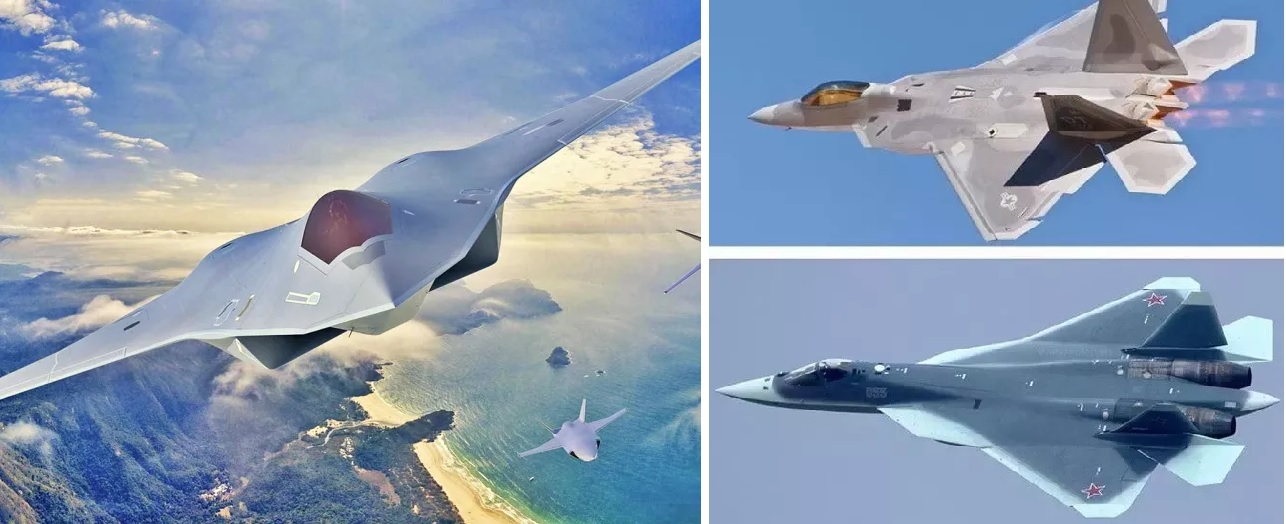 Key Differences Between 5th vs. 6th Generation Fighter Jets
Key Differences Between 5th vs. 6th Generation Fighter Jets
-
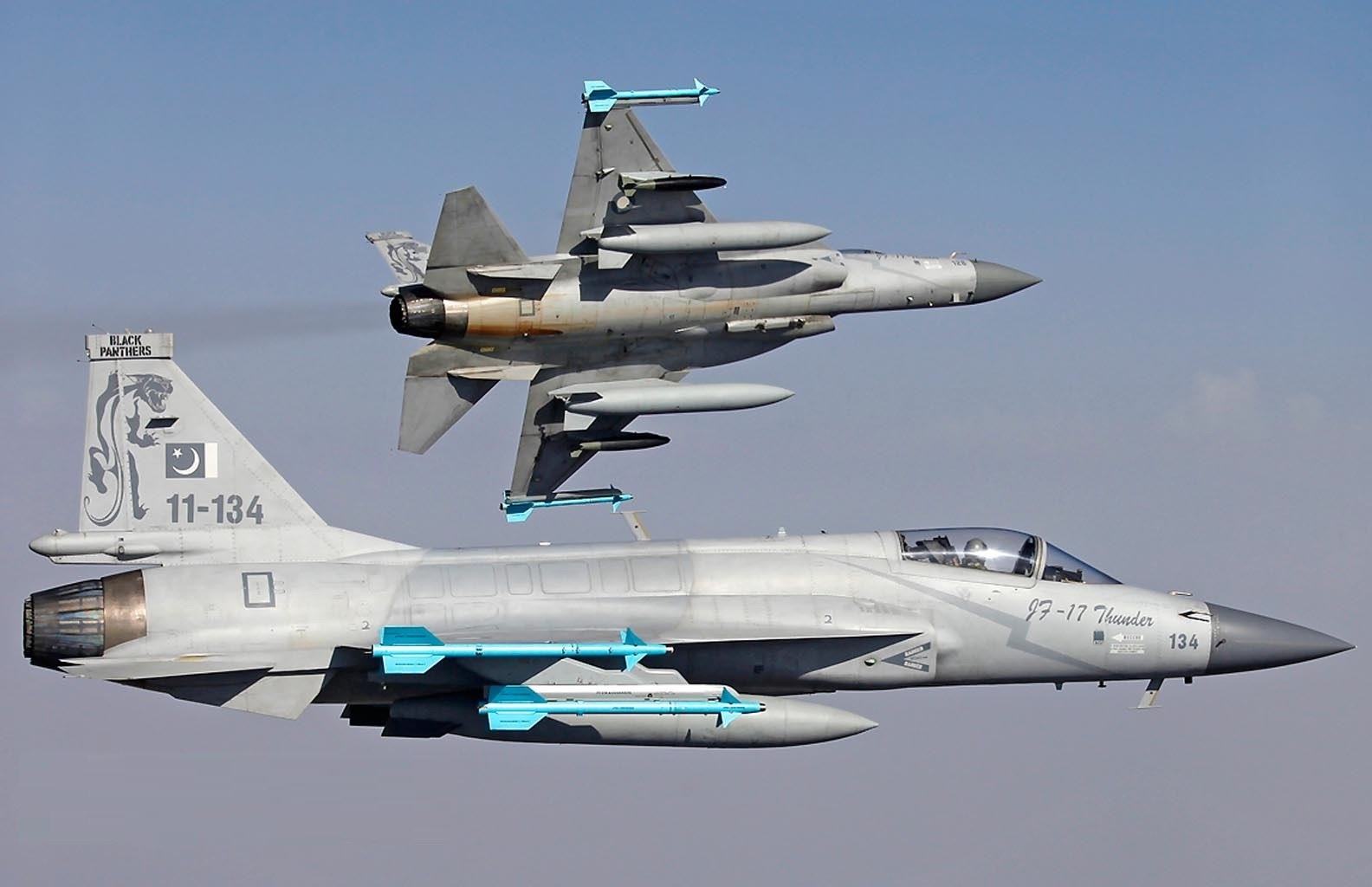 Pakistan Air Force to Unveil Stealth-Enhanced JF-17 Block 4 Fighter Jet by 2028
Pakistan Air Force to Unveil Stealth-Enhanced JF-17 Block 4 Fighter Jet by 2028
-
 Pakistan Announces 15% Increase in Defence Budget for 2024-25 Amid Economic Crisis
Pakistan Announces 15% Increase in Defence Budget for 2024-25 Amid Economic Crisis
-
 India’s AMCA Engine Decision: Safran vs. Rolls-Royce Final Expected by 2025
India’s AMCA Engine Decision: Safran vs. Rolls-Royce Final Expected by 2025
-
 India's TEDBF Program Takes Shape First Flight by 2028: Aiming for Naval Supremacy with Advanced Stealth and Technology
India's TEDBF Program Takes Shape First Flight by 2028: Aiming for Naval Supremacy with Advanced Stealth and Technology
-
 What Would Happen if the USA Left NATO? A Comprehensive Analysis
What Would Happen if the USA Left NATO? A Comprehensive Analysis
Top Trending in 4 Days
-
 China Unveils the World’s First Thorium-Powered Cargo Ship, Carry up to 14,000 Shipping Containers
China Unveils the World’s First Thorium-Powered Cargo Ship, Carry up to 14,000 Shipping Containers
-
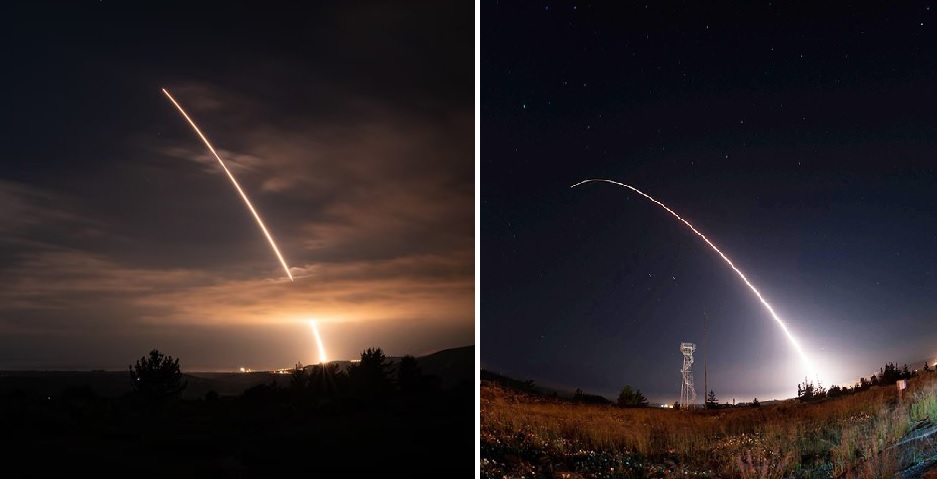 United States Successfully Conducts Unarmed Test Launch of Minuteman III ICBM from California
United States Successfully Conducts Unarmed Test Launch of Minuteman III ICBM from California
-
 Ukraine Opens First Underground Military Training Hub Built with Metinvest’s Steel Dream Technology
Ukraine Opens First Underground Military Training Hub Built with Metinvest’s Steel Dream Technology
-
 NASA Confirms Anomalous Tail on Interstellar Object 3I/Atlas — Defying Known Comet Behavior
NASA Confirms Anomalous Tail on Interstellar Object 3I/Atlas — Defying Known Comet Behavior
-
 Blogger Claims Il-76 Cargo Plane Shot Down in Sudan Was Recently Purchased from Kyrgyzstan for $12 Million
Blogger Claims Il-76 Cargo Plane Shot Down in Sudan Was Recently Purchased from Kyrgyzstan for $12 Million
-
 China Begins Trial Production at the World’s First Flying Car Smart Factory in Guangzhou
China Begins Trial Production at the World’s First Flying Car Smart Factory in Guangzhou
-
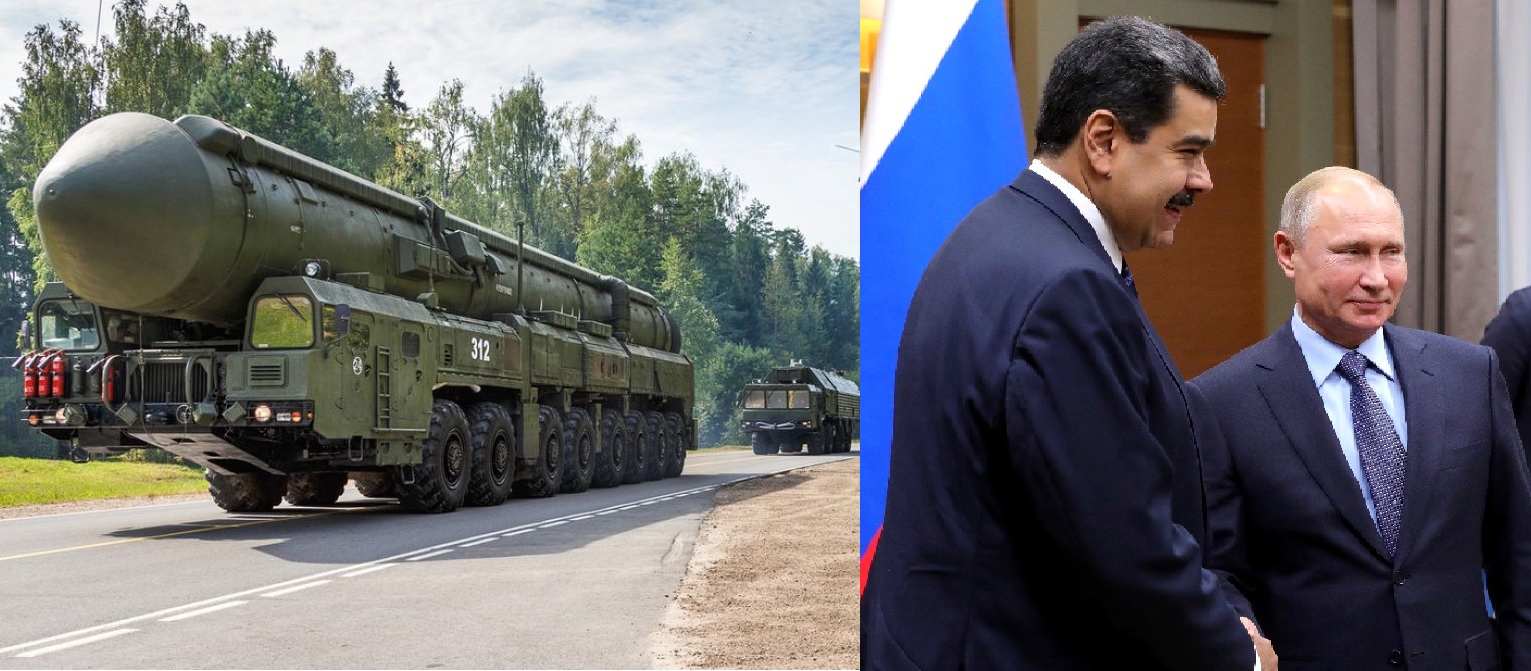 Russia Considers Supplying Venezuela with the “Oreshnik” Missile System — Why It Matters
Russia Considers Supplying Venezuela with the “Oreshnik” Missile System — Why It Matters
-
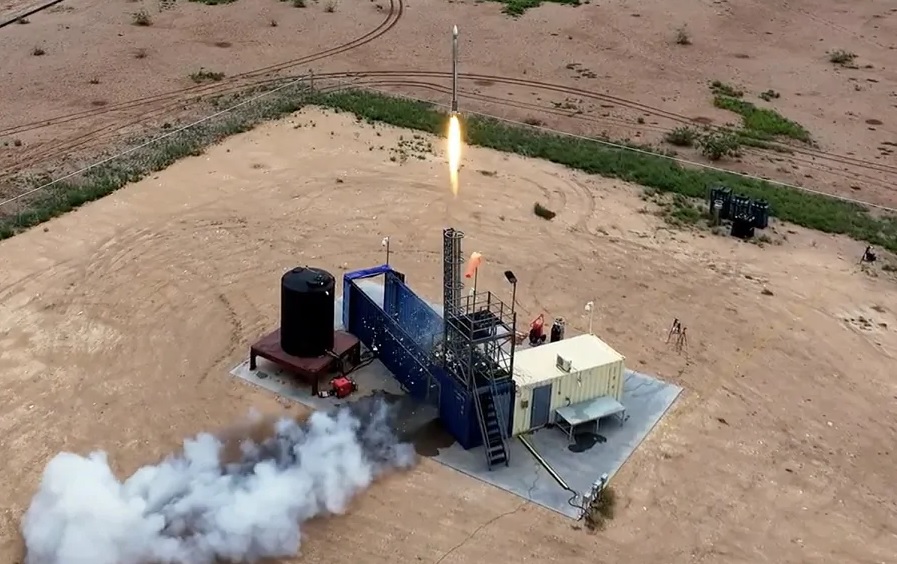 Hanwha Defense USA Invests in Firehawk Aerospace to Accelerate 3D-Printed Rocket Motor Production
Hanwha Defense USA Invests in Firehawk Aerospace to Accelerate 3D-Printed Rocket Motor Production











